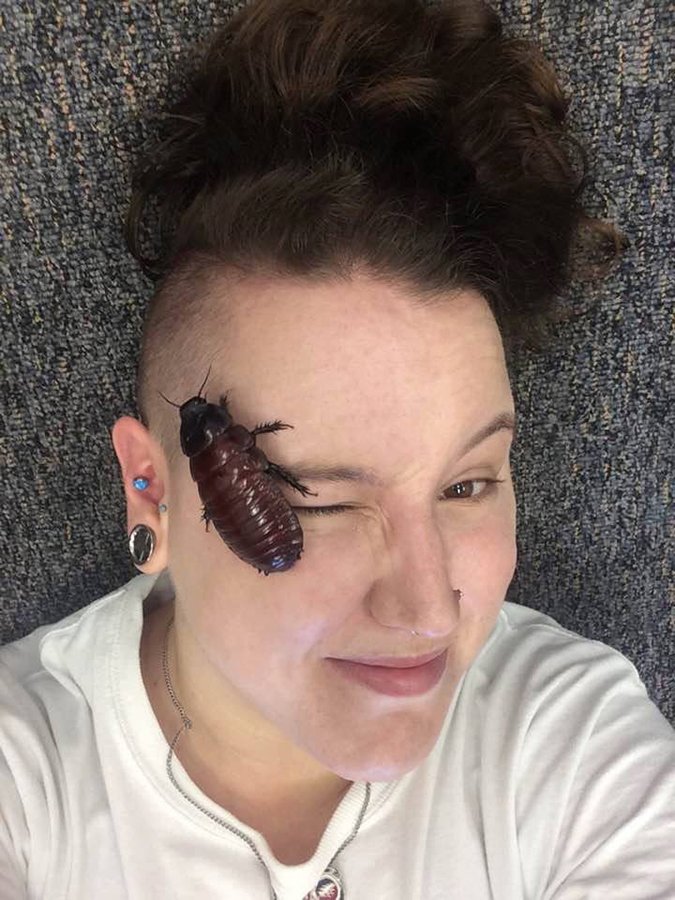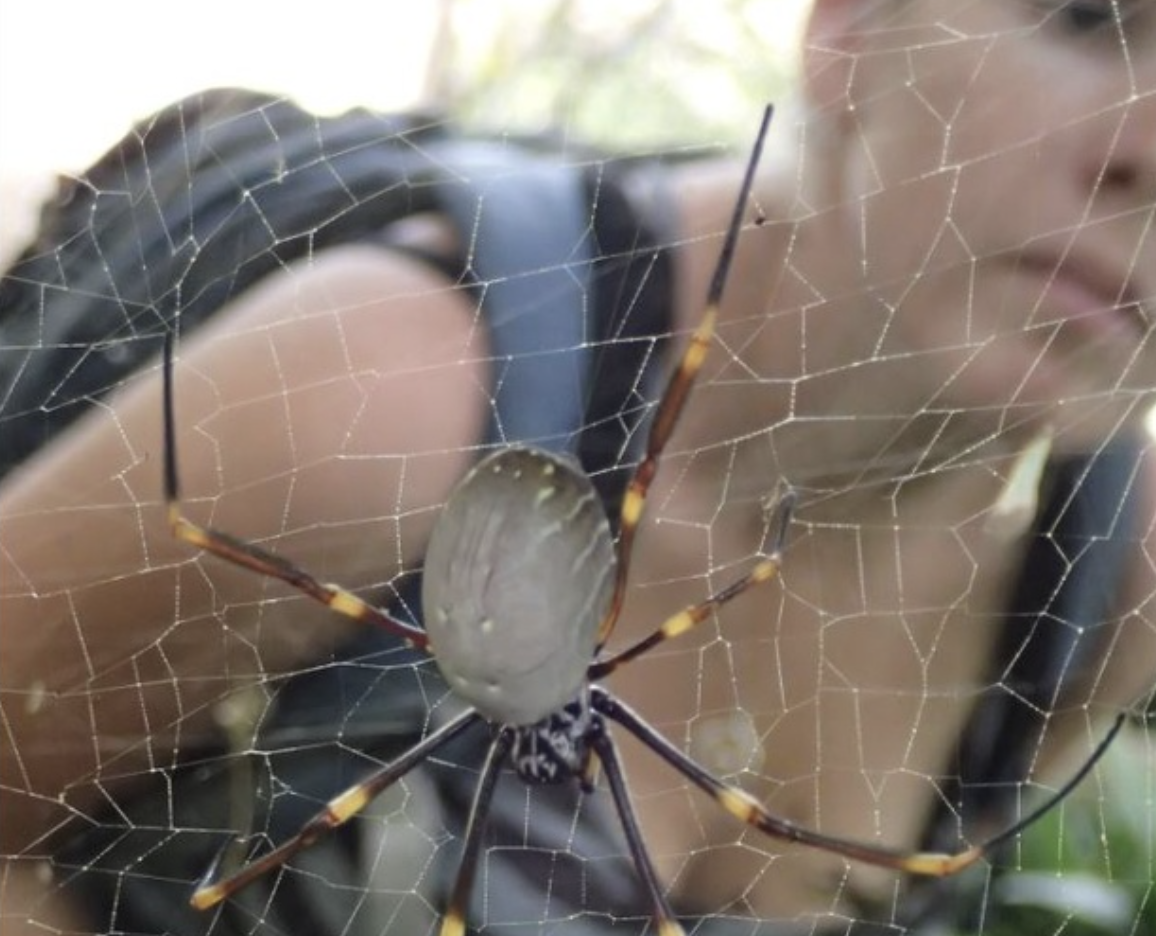Down and dirty: the Aussie women working in entomology

The field of entomology in Australia is overwhelmingly dominated by men. Is this because young girls and women simply aren’t interested in getting their hands dirty? These female entomologists say no.
Rather, it’s a symptom of the culture of our top research institutions— from universities to museums— that perpetuate the idea that an entomologist is typically a man, and this is true for many different areas of science.
Entomology is a broad field, encompassing everything from the study of insects and spiders, to disease control and work with antivenoms. Yet despite the field’s undeniable value, as well as renewed calls for fresh blood, we still see a disparity in the numbers between female and male entomologists.
“Take a look at the invited speaker line up for most conferences and you will often see more men than women, or glance over the number of men professors compared to women professors in Australian universities, you will see huge differences in numbers,” said Western Sydney University entomologist Kate Umbers.
“This is largely because researchers, including entomologists, are still employed in systems that were set up for well-off, well-supported men.
“Entomologists and researchers in all fields face short-term contracts, job insecurity, cultural and innate biases against gender, race, age, and poor workplace policy for carer and family support.”
Here, we chatted to upcoming and established female entomologists about what inspired them to go in the field and the issues they faced once they got there.
Kate Umbers, entomologist
Insect of choice: The mountain katydid

WSU entomologist and creator of Superstars of STEM Kate Umbers’ career in entomology didn’t stem from a stereotypical, life-long love of bugs.
“My really strong passion for insects developed at university. The more I learned about how little we know about them, the more excited I became about the potential for discovery,” she says.
The more Kate studied insects the more she became aware of how undervalued they are.
“I regularly carry-on about ‘vertebrate-bias’ and why we need desperately to focus on and understand the often little invertebrate creatures, because we know we rely on them to do all the hard work keeping the ecosystem functioning, but we barely understand anything about what they need to survive.”
Kate’s insect of choice is the mountain katydid. “Besides its heart-warming appearance, and gentle habits, the mountain katydid is exciting because it is like no other of its kind – it has a defensive strategy that, while common across animals, has barely been studied.”
While studying the mountain katydid, Kate experienced sexism in the field first hand.
“A simple experiment is when I ask my dad to help me do field work. People from the public that are interested in what we’re doing will immediately talk to dad, assuming he’s the professor. This speaks to the work we have to do to change public perceptions around what a scientist is.”
Georgina Binns, entomologist
Insect of choice: Weevils

Macquarie University entomologist Georgina Binns’ love for insects developed from an early admiration of Attenborough documentaries and … weevils, an insect that most people would consider a pest.
“Weevils were probably my favourite insect for the longest time. I have a small giraffe-neck weevil tattoo above my elbow, a species I have loved since seeing it on one of Sir David’s documentaries.”
It wasn’t until Georgina completed her undergraduate degree at UNE that she realised her love for insects could be turned into a career. But it’s her current supervisors that she credits for stoking her passion.
“Professor Mariella Herberstein immediately took me on to work under her supervision and introduced me to Kate Umbers and Julia Riley at UNSW and now I have three incredible female entomologists/biologists looking out for me and guiding me through my research.”
It’s this kind of mentorship that gives Georgina hope for the future of entomology.
“You really just need an enthusiastic teacher or mentor to instil their passion into you, and I feel like that is a role I was made for; but we need to keep that enthusiastic momentum going for the future generations of women in science, and entomology.”
Erinn Fagan-Jeffries, entomologist
Insect of choice: Parasitoid wasps

“I went on an excursion to a nature education centre in primary school and I got to hold a stick insect – it instantly fascinated me and I was so lucky to have parents who helped me start keeping them as pets,” says Adelaide University entomologist Erinn Fagan-Jeffries.
“My family got used to having the babies escaping all through the house, even hitching rides to school on our school bags! I don’t think it was until year 9 or 10 that I realised that entomology was actually a possible career path, and once I realised that I never turned back.”
While Erinn says that there were never a lot of avenues to study entomology at high school, she had science teachers in year 11 and 12 who went out of their way to support her ambitions and find opportunities for her.
“I think it definitely makes a difference having teachers believe in you and tell you that what you want to do as a career is possible.”
Now, Erinn spends most her of time studying parasitoid wasps in a female-dominated lab.
“Female wasps inject their eggs into live caterpillars. The baby wasps then eat the caterpillar from the inside out while it’s still alive. They might sound really gross, but they’re really important in the environment.”
For Erinn, communicating the importance of difference insects to the ecosystem should be a taught at a young age. “I try and get out and talk to schools and community groups as much as I can, and the more of us that do that, hopefully the more clear it becomes that entomology is not just for boys!”
Perry Beasley-Hall, entomologist
Insect of choice: Cockroaches

Unlike most budding entomologists, University of Sydney PhD student Perry Beasley-Hall was scared of insects up until her undergraduate years.
Now, Perry is most fascinated by Australia’s native cockroaches, an insect that may cause some to recoil in misguided disgust.
“Some of them look like they’re made of opalite, others are bright lime greens. I don’t think that most people realise the pest cockroaches they’d want to step on only represent 0.5 per cent of the known species on the planet.”
Despite being surrounded by supportive academics, Perry said she still encountered sexism. “I’ve had men working with me express doubt about my ability to do fieldwork because I’m a woman, or talk down to me in a way I know they wouldn’t be caught dead doing if I were male,” she says.
“Entomology is a male-dominated field with little turnover. Because it’s so niche, academics become experts on certain groups of insects over many decades and they often aren’t replaced by younger students like me.”
In combatting the disparity between males and females in entomology, Perry says that the issue is twofold.
“It’s a societal issue, but it’s also a failure of the people in our field to communicate their work to the wider community. Until little girls become accustomed to portrayals of female scientists in media, it’s going to be hard for them to picture themselves in that position as adults.
“We need to let girls go out into the backyard and explore without fear of getting dirty because of how they ‘”should’” behave. As academics, we also need to engage with school kids and make them realise this IS something you can do as a career and have a lot of fun along the way!”
Lizzie Lowe, Spider expert
Spider of choice: Golden orb weaver

For Macquarie University spider expert Lizzie Lowe, a love for arachnids stemmed from long days spent outside.
“One of my earliest memories is lying down on the lawn in my back garden and watching all of the weird and wonderful critters that crawled past,” she recalled.
“I think the majority of my entomological education came from my love of the outdoor and hiking. When you’re out in the bush all the time as I was growing up, its impossible not to become fascinated with all of the amazing insects that live there.”
Lizzie said that it’s not hard to get young girls excited about insects and spiders. Rather, it comes down to supporting them along their journey, not just at the beginning.
“I’ve been incredibly lucky in that I’ve been surrounded by very supportive environments for my entire education and career. People have always taken my passion seriously and have encouraged me to do what I love.
“The gender balance of younger generations of entomologists is pretty even, the problem is maintaining and supporting women throughout their academic and scientific careers.”










